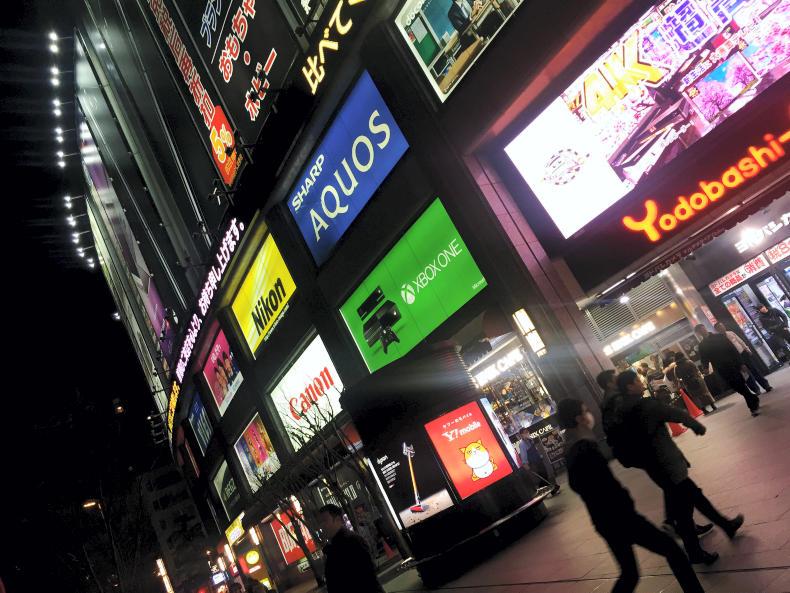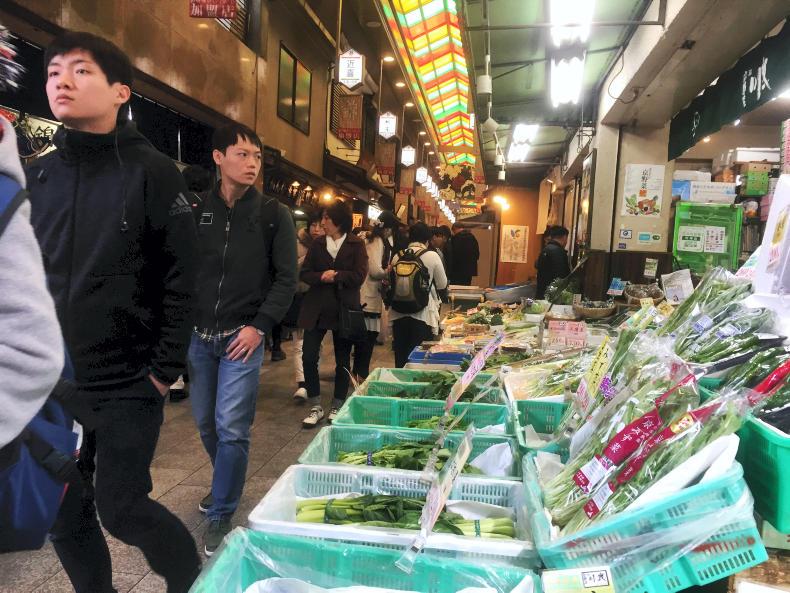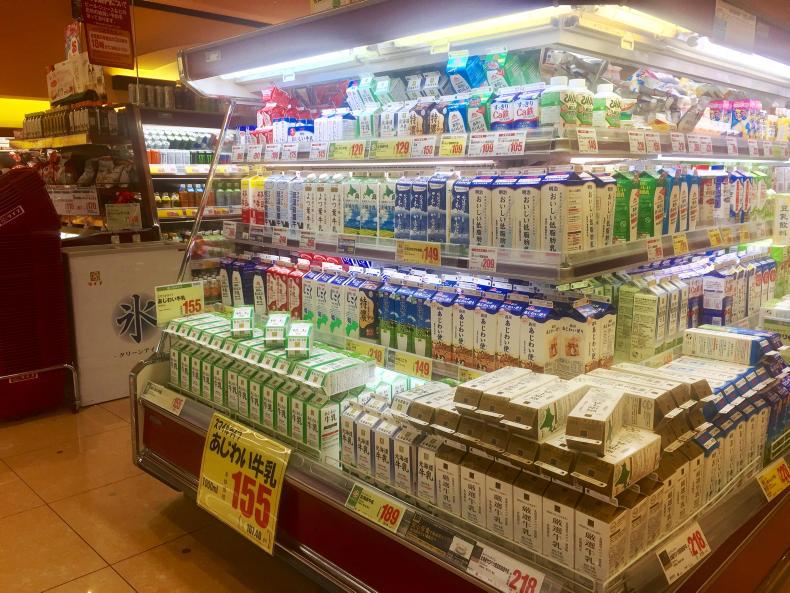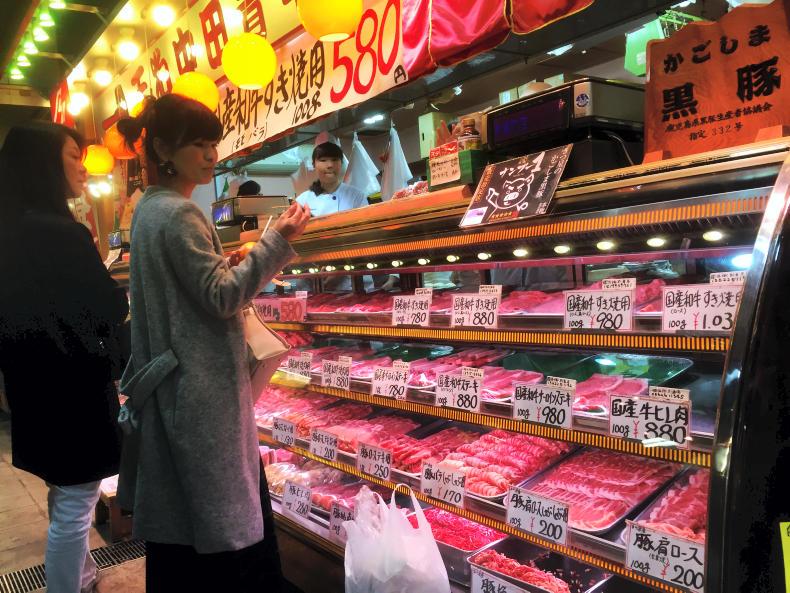To anyone wondering about the importance of the Japanese market, the shock of Tokyo’s constant flow of people will be an instant revelation.  The city is home to 37m people who throng its busy streets day and night under towering neon lights. They commute through an even busier sprawling transport system, where they can buy hot and cold food and drinks from underground malls and ubiquitous vending machines – you can even pay for ice cream with your metro pass. Supermarkets, bars and restaurants extend vertically into high-rise buildings.
The city is home to 37m people who throng its busy streets day and night under towering neon lights. They commute through an even busier sprawling transport system, where they can buy hot and cold food and drinks from underground malls and ubiquitous vending machines – you can even pay for ice cream with your metro pass. Supermarkets, bars and restaurants extend vertically into high-rise buildings.
The national population is 125m, but it peaked in 2010 and is now ageing rapidly. All observers of the Japanese food market are quick to warn of this risk: according to government forecasts, the population will shrink to 102m by 2045. The country has also suffered from years of economic stagnation caused by the global financial crisis and the 2011 tsunami and Fukushima nuclear accident. Yet, for many reasons, Japan remains an attractive export market and the proposed free trade agreement with the EU holds some promise for Irish farmers.

Japanese farming representatives point out that although the TPP trade deal with other Pacific nations including the US and its equivalent with the EU are not yet in force, the country is far from being a closed market. As reported last week, the domestic farming population has aged and dwindled faster than the rest of the nation, and consumers have been shifting away from the traditional rice staple in favour of more western diets incorporating dairy and beef. Japan is therefore importing more than 60% of its food by calorie count and 46% by value. This is more than any other developed country. Although the government is encouraging more domestic production of those products favoured by 21st century Japanese consumers, such as cheese, this industry shift represents a massive undertaking and Japan will continue to import large quantities of food for decades to come.
This is evident on supermarket shelves, where a two-tier market has developed. Local beef steak retails for €50/kg, and up to €80/kg for densely marbled cuts from the most sought-after Wagyu breed cattle. But in the same refrigerated cabinet, Tokyo shoppers can buy Australian or US steak for €20/kg. Japan imports 500,000t of beef per year, and 20,000 live cattle from Australia. The same goes for pork, with domestic chops selling for €16/kg whereas US ones are only €9/kg. Canadian and European pork can also be found in Japan – mostly Spanish these days, with some Irish products as well.

In the dairy aisle, all liquid milk is domestic and standard cartons are priced at €1.35/l. In a nod to real milk lovers, only the full-fat stuff can be called “milk” – semi-skimmed must be labelled “dairy drink” – and local premium brands command higher prices. But the rest of the section shows a strong presence of imported products, with portions of Australian processed cheese selling for €4.60/kg and grated Parmesan from the US giant Kraft Foods fetching €3.40 for a tub of 80g – higher than the Japanese-made equivalent. The use of European PGIs is not protected, and this is part of the proposed trade agreement. Meanwhile, butter – only domestic in the supermarket visited by the Irish Farmers Journal – sells for a whopping €17/kg.
A number of factors have been playing in favour of opening Japan to international agricultural trade further. Shortages of certain products have hit consumers – butter at the end of 2015, and potatoes last month – making officials and public opinion more open to the idea of relaxing import restrictions. Japan is also keen to plug some of its agricultural trade deficit through developing exports.
One ministry of agriculture official pointed out to the Irish Farmers Journal that it was “huge”, with €80bn worth of food imported every year but only a few hundred millions’ worth exported.
Value
Government policy is to boost both the value of domestically produced food to 73% of consumption by 2025, and exports to €8bn by 2020. That year, Tokyo will host the Olympics and the country’s farmers and processors are currently scrambling to meet international quality standards such as the food safety HACCP certification in time to showcase their products at the event.
“Ten years ago, it was all about protecting our market,” international relations manager with the national co-op federation JA Zenchu Yasuyuki Kobayashi told the Irish Farmers Journal. “Now this stance has changed: with incomes rising in Vietnam, China, we think that maybe we could sell agricultural infrastructure, etc, to other Asian countries.”
Yet, the biggest event in preparing the ground for the proposed free-trade agreement with the EU was the signature of TPP.
US president Donald Trump parked it since coming to power earlier this year, and it is still opposed by many Japanese farmers and politicians on the left of the political spectrum, with posters against the deal visible in Tokyo. Yet it has set a precedent and is now the benchmark: Kobayashi said the industry’s position on trade negotiations with Europe was “not to exceed the concessions taken in TPP”. Europe would like more, and an EU official said the 81% elimination of tariffs achieved under TPP only looked good because it applied to such a high level of existing protectionism in the first place. But some middle ground seems to be emerging.

From an Irish point of view, a trade deal with Japan would open opportunities in dairy and meat. “Grass-fed beef is a niche market in Japan,” offering a chance for differentiation from existing US and Australian imports, Tomoe Yokouchi of the semi-state agency Agriculture and Livestock Industries Corporation told the Irish Farmers Journal. “We are also interested in importing dairy – New Zealand is our main source, but I think only Ireland can compete with them,” he added, with price a key factor here.
Watch: Japanese grain grower makes his own popcorn